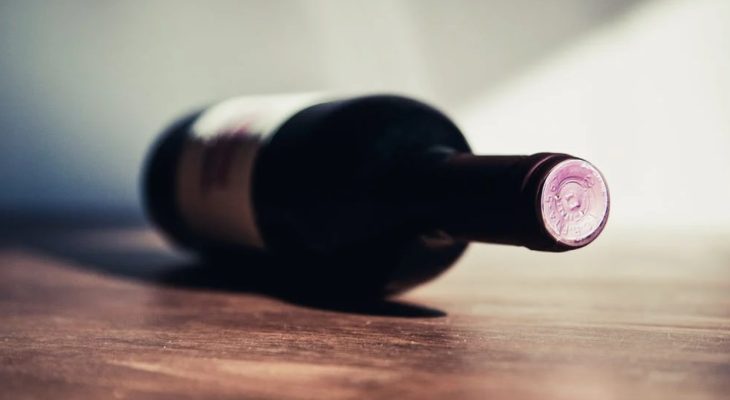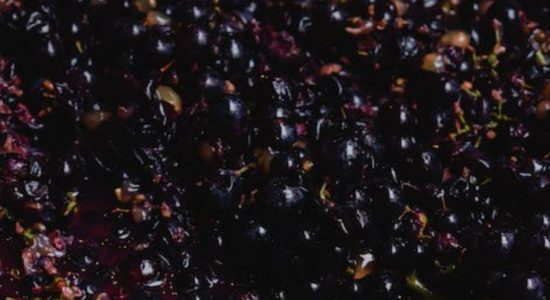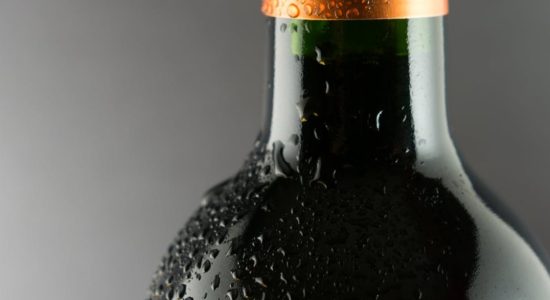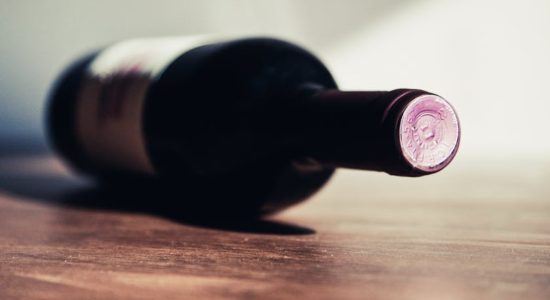How To Use Egg Shells To Clear Wine (Easy Guide)

Dealing with cloudy wine can be challenging, and I often experiment with natural solutions when fining or clearing my wine up. However, today, I’d like to discuss a more creative method that involves eggshells.
Here’s how to use egg shells to clear wine:
- Dry the eggshells in the oven.
- Crush the eggshells into a powder.
- Add the eggshells to your wine.
This method can be tricky to perform without initiating drawbacks, so in this article, I’ll provide an extensive guide on how to execute it. This approach comes with both pros and cons, so I’ll also introduce other time-tested ways of making homemade wine less cloudy.
1. Dry the Eggshells in the Oven
Heat treatment serves two purposes. First, it kills any bacteria possibly present on the eggshells. Secondly, the drying will make eggshells crunchier. This will be very helpful as we want to make them into a fine powder later.
Catching a disease is the main concern for many when using raw eggs, and luckily, it’s pretty simple to prevent this from happening.
To ensure even more thorough sterilization, you can boil the eggshells for 15 minutes before placing them into the oven.
Drying in the Oven
This is usually the simplest method of drying your eggshells. The process is rather straightforward:
- Heat the oven. There is varied advice regarding recommended temperatures and duration for drying. I decided to go for 250°F (121°C), but it could be anything from 220°F to 400°F (104°C to 204°C); you just have to adjust the baking time accordingly.
- Spread your eggshells on a baking sheet. Try to fit them as freely as possible.
- Bake. Personally, I baked at 250°F (121°C) for about 40 minutes. If you’re going for a lower temperature, you might need to wait for about an hour. Alternatively, just about 10 minutes can be enough at 400°F (204°C).
Alternative Methods of Drying Eggshells
If you don’t have an oven, there’s no need to worry; there are other ways to dry the eggshells. Here are some of the most efficient approaches:
- Air fryer: heat to 356°F (180°C) and bake for 20 minutes.
- Microwave: bake at high for 3 to 5 minutes, depending on how many eggshells you’re doing at once.
- Sun: you can put the eggshells out on a hot sunny day to dry them if possible in your weather. If you find the eggshells aren’t crunchy by the evening, leave them out for an extra day.
2. Crush the Eggshells Into a Powder
It’s recommended to add eggshells in the form of fine powder. If you have any worries, stay assured that it’s completely safe (if you go through the sterilization properly, of course).
In fact, eggshell powder can be very beneficial for your health. You can add it to your smoothies or other preferred foods as a natural source of calcium.
Here are a couple of ways to crash the eggshells into fine powder:
- Spice grinder: an easy way to ensure the eggshells are properly powdered. You can use an electric or manual one to crash until the mixture has an even powder consistency.
- Ziploc: using a large Ziploc to crash something is a widespread method. Put the eggshells into a Ziploc bag, seal it, then use a cooking mallet or another heavy object to crash until the pieces are as tiny as possible.
3. Add the Eggshells to Your Wine
Add one egg worth of eggshell per gallon (3.8 liters) of wine to make it clearer. Leave it for a few days and watch what happens.
Normally, the wine should become less cloudy after about a week. As the eggshell powder collects particles from the liquid, a layer of sediment forms at the bottom of the jug.
The Effectiveness of Eggshells for Clearing Wine
From my experience, I can say the eggshell method works fine. It’s certainly not perfect compared to other options out there, but if you’re interested in trying the traditional way, definitely give it a go.
Eggshells are similar to chalk as they are essentially almost entirely calcium carbonate, which can work well as a wine clearing solution as it attracts particles floating in the liquid and helps sediment form heavier pieces, which settle at the bottom of the jug.
While using eggshell powder is a traditional method not very widespread these days, egg whites are often added to commercial wine for similar purposes. They work incredibly well for reducing tannins in red wines.
Eggshells, on the other hand, work better for white or fruit wines that are light in color. That’s because, along with attracting sediment, the eggshell powder can absorb the color and make your wine less bright.
The bottom line is, if you would like to experiment with different methods for clearing your wine, try a traditional approach that was used by our ancestors. If nothing seems to work for you so far, the eggshell powder method is always worth trying.
However, this approach comes with its own set of disadvantages, due to which I would rather advise trying other clarifiers first before using eggshells.
The Drawbacks of Clearing Wine with Eggshells
Let’s discuss in detail why this method might not be your number one choice. The thing is, while it works for clearing wine, it also comes with some additional side-effects that are not as beneficial.
Devoid of Color
This drawback was already briefly mentioned, but I would like to elaborate on it here.
The fact that eggshell powder makes your wine color less intense can be a significant disadvantage. Producing rich-in-color wines is hard work, and you wouldn’t want to get a pale (though perfectly clear) liquid as the result of your effort.
One method I came across was covering the jugs with some cloth while the eggshells do their magic to protect the wine from changing its color. However, I wouldn’t know whether this actually works.
The best solution would be to use eggshells only for white wines. That way, there won’t be much color to take, and you can expect minimal changes from the eggshell treatment.
Decreased Acidity
If you’re an experienced homebrewer and winemaker, you might know that calcium is one of the salts used for decreasing acidity. As eggshells are very rich in calcium, they will have the same effect on your wine.
Usually, wines range from 2.5 to 4.5 pH, with some types being more acidic than others. Acidity is one of the four fundamental wine traits. If you don’t know them by heart yet, here they are: acidity, alcohol, tannin, and sweetness.
Acidity creates that sour taste and crispness that we enjoy in our wine. Additionally, acidity is responsible for preserving the wine as it ages. Overall, it is vital that all four fundamental wine traits are well-balanced and suit the variety of grape or other fruit you’re using.
As mentioned, wines differ in recommended acidity, so your best bet would be to apply the eggshell method to the low acidic types.
However, as you might remember, I emphasized that eggshell powder absorbs the color, so using it with red wine would be problematic. Well, red wines are essentially the least acidic, while white ones usually require a higher acidity level.
That’s where the main inconvenience lies. You can use other finings and boost acidity up after you’ve used the eggshell powder to clear your wine, but why give yourself the trouble when there are other convenient ways to reduce the sediment?
Alternative Methods of Clearing Wine
So, what other methods can be used to clear wine with great certainty of success? Here are a few reliable options I would recommend as an alternative to eggshell powder. If you want to experiment with your wine making skills, feel free to try any of these solutions.
Wait It Out
As it often happens with homebrewing and winemaking, some patience can usually do the trick.
Waiting until the fermentation process dies out completely is essential. Gravity numbers determine this: measure gravity every two days until you get equal values. Once gravity stops changing, fermentation is over.
However, it is best to give it a few more days for the sediment to settle. Before trying any finings, just wait a little longer to give your wine a chance to settle into its final form naturally.
This way, you won’t risk hurting the flavor or color of the drink with chemical additions, and trust me, the waiting game works more often than not.
Super Kleer KC Fining Clarifier
If extra waiting doesn’t help to reduce the haziness, it’s time to try other methods. Using Super Kleer KC Fining Clarifier is the first solutions one I would recommend, as it (deservingly) has a great reputation for clarifying beers and wines.
Super Kleer KC Fining Clarifier is a two-step fining solution that leaves haze and sediment a chance of escaping. It works by attracting oppositely charged particles and, as a result, collects everything floating in the liquid.
Kieselsol, also known as silicon dioxide, acts first. It is negatively charged, so it gathers positively charged tannins.
Next comes chitosan made of chitin derived from shellfish. Unlike kieselsol, it is positively charged and binds the rest, including yeast cells and proteins.
The result is a distinctively clear wine that you can prepare with little effort and minimal inconveniences. The solution works best for red wines, but you can apply it to other types and for beers (if you brew).
Typically, one package will do for 5 to 6 gallons (19 to 23 liters) of wine. Wait for two weeks after adding the fining to maximize the effect.
Sparkolloid
Here’s another popular fining solution that can effectively reduce haziness in your wine. After about a week, you will find the batch crystal clear while also not having any significant impact on aroma and flavor.
However, waiting as long as one month is recommended for the best final result. That’s a lot of time, but the effect is entirely worth it. As I said, patience is gold when it comes to winemaking.
Sparkolloid should be added as a hot mixture, so some preparation is required first. Add 1 tbsp (3.4 g) per 1 gallon (3.8 liters) of boiling water, then boil for about 15 minutes, stirring from time to time.
Add to your wine while the solution is still warm. 1 gallon (3.8 liters) of the mixture would do for 6 gallons (22.7 liters) of the batch.
Bentonite
Bentonite is a widely used fining agent, though I would suggest proceeding with caution. It is a clay mineral, which many don’t feel comfortable adding to their wine, and it can have significant adverse effects if present in excess.
Bentonite can be added a month before bottling or at the very start of fermentation. That’s because it enhances the fermentation process in addition to clarifying wine.
All proteins and yeast cells get collected by bentonite and settle at the bottom as tightly bound sediment. Bentonite attracts six times its weight worth of particles, so one can say it is immensely effective.
However, if you add bentonite excessively, it is likely to impact the flavor and aroma, and not in a good way. Make sure to strictly follow the guidelines on the package to avoid potential problems with the quality of your wine.
Fighting Pectin Haze – Pectic Enzyme
Lastly, there’s a specific type of haze that cannot be removed as easily. I’m talking about pectin haze, which emerges if the fruit is added to the wine.
If you’re struggling with that, the only way to solve the problem would be to add the pectic enzyme. You can use 1 tsp (2.8 g) per 6 gallons (22.7 liters) of finished wine to reduce the haziness.
Final Thoughts
Eggshells can be effectively used to clear your wine. It is essential to dry and sterilize them in the oven before crushing them into a fine powder and adding it to the batch.
However, you should consider the possible drawbacks. Sometimes, it is best to use alternative solutions, such as sparkolloid or bentonite.







